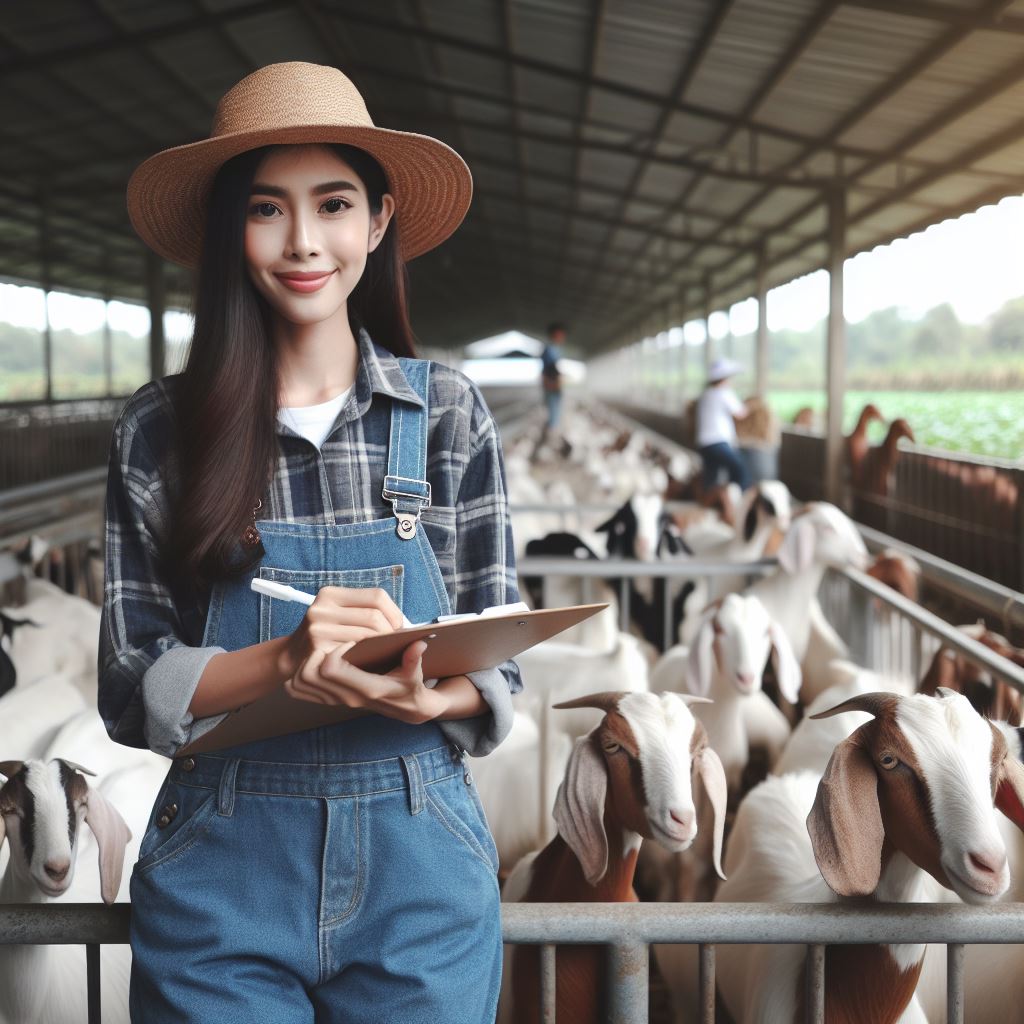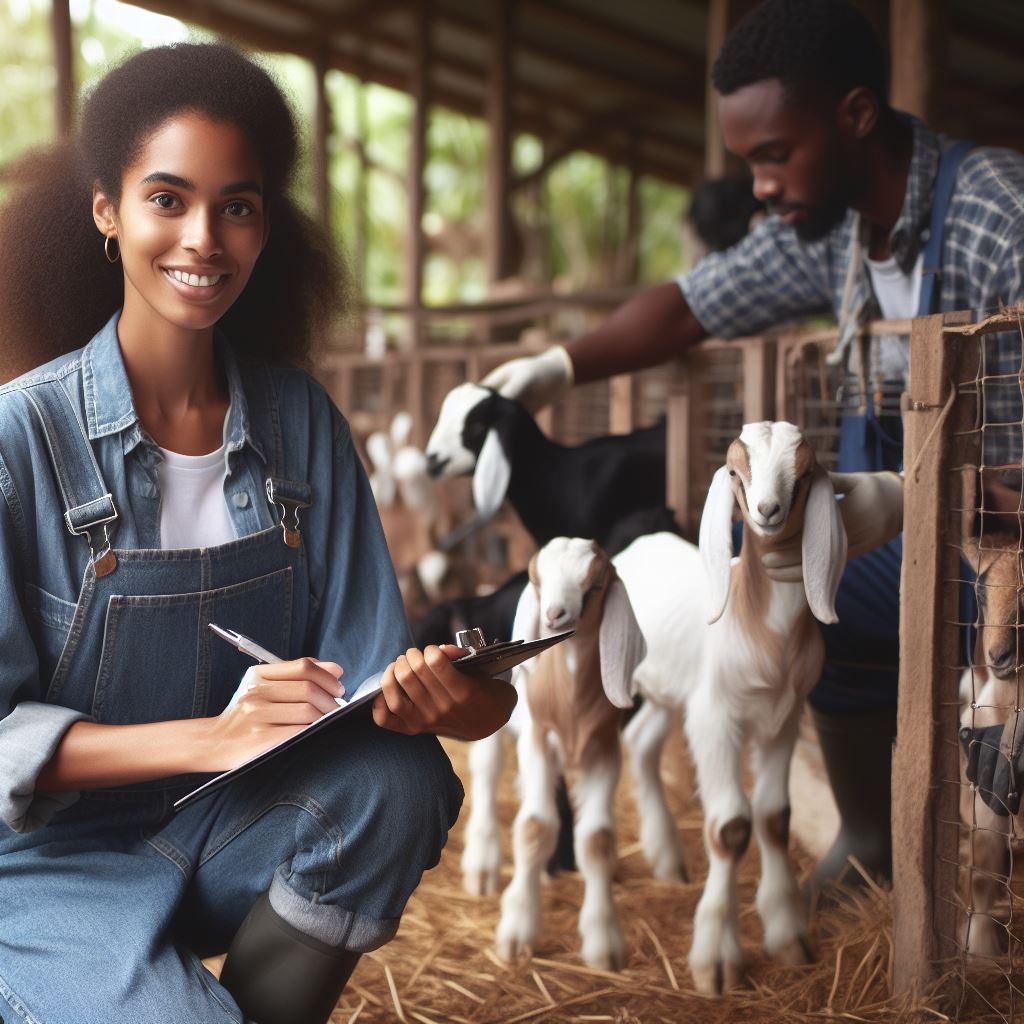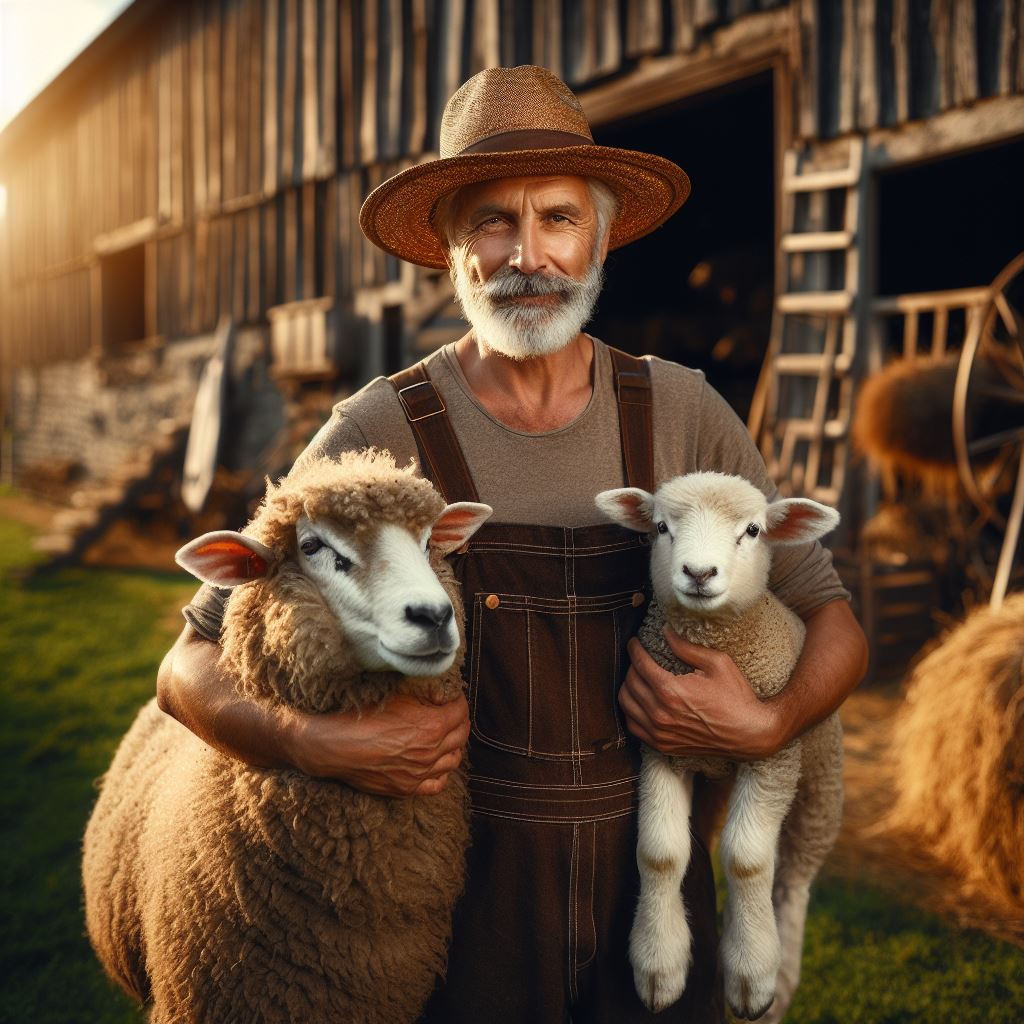Introduction
Dairy goats are a valuable livestock breed that provides milk, meat, and fiber for farmers.
Essential breeding and care are pivotal in ensuring the well-being and optimizing production potential of dairy goats.
Brief overview of dairy goa
Dairy goats are breeds specifically raised for milk production.
These goats, such as the Saanen, Alpine, and Nubian, are known for their high milk yield and adaptability.
Dairy goat farming involves proper nutrition, milking routines, and healthcare to ensure a consistent and quality milk supply, supporting the production of various dairy products.
Importance of breeding and care for dairy goats
Breeding and care are critical in dairy goat farming to ensure optimal milk production.
Selective breeding enhances desirable traits, while proper nutrition, veterinary attention, and comfortable living conditions are essential for the goats’ health and milk quality.
Attentive care contributes to a thriving and sustainable dairy goat operation.
Breeding Dairy Goats
Breeding dairy goats is an essential part of maintaining a successful and productive herd.
It involves selecting the right breeds, understanding the reproductive cycle, choosing the appropriate mating options, and providing proper nutrition and care during the breeding process.
Selecting the right breeds for breeding
When choosing breeds for breeding, it is crucial to consider the specific goals and needs of your dairy goat operation.
There are two primary types of breeds to consider:
- High milk production breeds: These breeds, such as the Saanen and Toggenburg, are known for their ability to produce large quantities of milk.
- Dual-purpose breeds: Breeds like the Alpine and Nigerian Dwarf are known for both milk production and meat quality.
Understanding the reproductive cycle of dairy goats
To successfully breed dairy goats, it is important to understand their reproductive cycle and recognize the signs of heat.
The estrus cycle, which is the period when goats are receptive to mating, typically lasts between 18 to 21 days.
- During this cycle, goats display behavioral changes such as restlessness, mounting other goats, and a swollen vulva.
- Providing optimal breeding conditions, such as a clean and comfortable environment, can significantly increase breeding success.
Mating options for dairy goats
There are two main options when it comes to mating dairy goats:
Transform Your Agribusiness
Unlock your farm's potential with expert advice tailored to your needs. Get actionable steps that drive real results.
Get Started- Natural mating: Allowing goats to mate naturally with a selected buck.
- Artificial insemination (AI): Using frozen or chilled semen to artificially inseminate the doe.
Proper nutrition and care during breeding
Proper nutrition and care play a crucial role in the successful breeding of dairy goats.
Providing a balanced diet, rich in essential nutrients, can help improve reproductive health and increase fertility rates.
In addition to nutrition, ensuring that goats receive regular vaccinations and effective parasite control is vital for their overall well-being during breeding.
Breeding dairy goats requires careful planning and consideration.
By selecting the right breeds, understanding their reproductive cycle, choosing suitable mating options, and providing proper nutrition and care, you can ensure the success and productivity of your dairy goat herd.
Read: Green Goat Farming Methods
Pregnancy and Kidding
Confirming pregnancy in dairy goats
During pregnancy, it is important to confirm whether a dairy goat is indeed pregnant.
This can be done through physical signs as well as veterinary confirmation.
Physical signs of pregnancy include a visibly larger abdomen and changes in the size and shape of the udder.
However, to get a more accurate confirmation, it is advisable to consult a veterinarian who can perform methods like ultrasounds or blood tests.
Preparing for kidding
Once pregnancy is confirmed, it is crucial to prepare for kidding.
Creating a safe and clean kidding area is essential to ensure the health and well-being of both the doe and the kids.
The area should have proper ventilation to prevent the buildup of harmful bacteria.
Additionally, gather all necessary supplies that may be required during the kidding process, such as clean towels, iodine solution for dipping the kids’ navels, and milk replacer as a backup in case the doe is unable to nurse.
Stages of labor and kidding process
Understanding the stages of labor and the kidding process is vital for successful birthing.
Early labor signs include restlessness, pawing the ground, and frequent urination.
These signs indicate that labor is approaching, and the doe should be closely monitored.
As active labor begins, contractions will become noticeable, and the birth of the kid(s) should occur within a couple of hours.
Aftercare for the doe and newborn kids
Aftercare for both the doe and the newborn kids is significant to ensure their health and well-being.
Cleaning and disinfecting the kids’ navels with an iodine solution is important to prevent infection.
This should be done shortly after birth. Additionally, ensuring proper bonding and nursing is crucial.
The doe and kids should be given uninterrupted time together to establish a strong bond, allowing the kids to nurse and receive vital colostrum, which contains essential antibodies for their immune system.
By properly managing pregnancy and the kidding process, dairy goat breeders can ensure the health and well-being of their animals.
Confirming pregnancy, preparing for kidding, understanding labor stages, and providing appropriate aftercare are all essential steps in raising healthy dairy goats.
Showcase Your Farming Business
Publish your professional farming services profile on our blog for a one-time fee of $200 and reach a dedicated audience of farmers and agribusiness owners.
Publish Your ProfileRead: Fencing Solutions for Sheep and Goats

Gain More Insights: Best Sheep Breeds for Small Farms in the US
Care and Management of Dairy Goats
Proper care and management are crucial for the well-being and productivity of dairy goats.
By implementing appropriate housing, grazing, feeding, and health care practices, goat owners can ensure the best outcomes for their animals.
Housing and grazing requirements
Providing adequate shelter
Dairy goats should have access to a well-maintained shelter that protects them from harsh weather conditions such as extreme heat, cold, and rain.
The shelter should offer adequate space for all the goats, with proper ventilation and drainage systems.
Access to pasture for grazing
Along with a shelter, dairy goats require access to pasture for grazing.
Pasture consists of diverse plants that offer nutrition and exercise opportunities for the goats.
It is essential to ensure the pasture is free from toxic plants and regularly rotated to prevent overgrazing.
Feeding and nutrition for dairy goats
Balanced diet for high milk production
To support the production of quality milk, dairy goats require a balanced diet consisting of roughage (hay or silage), concentrates (grains), and fresh water.
The diet should be formulated according to the specific nutritional needs of the goats, which may vary based on their stage of lactation.
Supplements and mineral requirements
Along with a balanced diet, dairy goats may require additional supplements such as vitamins and minerals.
These supplements help bridge any nutritional gaps and prevent deficiencies that could affect milk production and overall goat health.
Consulting with a veterinarian or animal nutritionist is crucial to determine the appropriate supplements for the goats.
Regular health checks and preventive care
Vaccinations and deworming schedule
Dairy goats should follow a proper vaccination and deworming schedule recommended by a veterinarian.
Vaccinations protect against contagious diseases such as goat pox, tetanus, and respiratory infections.
Regular deworming helps control internal parasites that can negatively impact the goats’ health and milk production.
Monitoring for common diseases and health issues
It is important to regularly monitor dairy goats for common diseases and health issues.
Common diseases in goats include mastitis, foot rot, and pneumonia.
Early detection and proper treatment increase the chances of a successful recovery and minimize the impact on milk production.
Milking routine and equipment
Establishing a milking schedule
Maintaining a consistent milking schedule ensures optimal milk production and prevents discomfort in dairy goats.
Most dairy goats are milked twice a day, approximately 12 hours apart.
It is crucial to maintain cleanliness and hygiene during milking to avoid contamination.
Proper handling and storage of milk
After milking, it is important to handle the milk appropriately to maintain its quality.
Milk should be promptly chilled to prevent bacterial growth and stored in clean, food-grade containers.
Regular cleaning and sanitization of milking equipment are also essential to ensure milk quality and prevent the spread of diseases.
By following these care and management practices, dairy goat owners can promote the health and productivity of their animals.
Providing adequate housing, nutrition, preventive care, and maintaining a proper milking routine contribute to the overall well-being of the goats and the quality of the milk they produce.
Read: Managing Goat Health: Disease & Prevention
Gain More Insights: Horse Feeding Strategies for Optimal Health
Conclusion
Recap of the importance of breeding and care for dairy goats
Breeding and care play a crucial role in the success of dairy goat farming.
Encouragement for aspiring dairy goat farmers to embark on this rewarding journey
Aspiring dairy goat farmers should be encouraged to embark on this rewarding journey.
With dedication to breeding excellence, compassionate care, and a commitment to continuous learning, you can cultivate a flourishing and sustainable dairy goat operation.
Your efforts will not only yield quality milk but also contribute to a thriving agricultural community. Best of luck!




